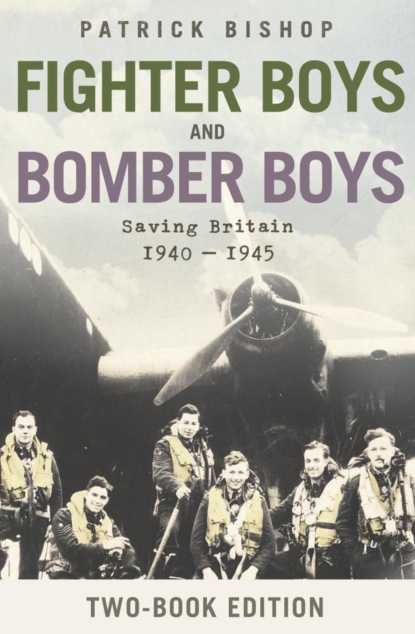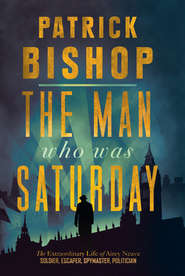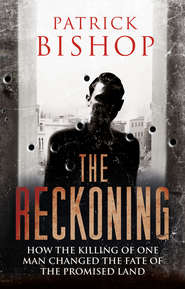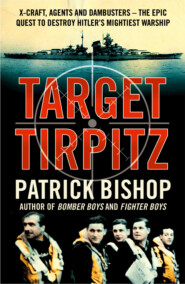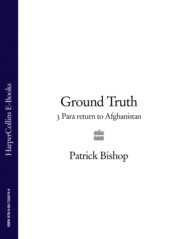По всем вопросам обращайтесь на: info@litportal.ru
(©) 2003-2024.
✖
Fighter Boys and Bomber Boys: Saving Britain 1940-1945
Настройки чтения
Размер шрифта
Высота строк
Поля
Starved of money, he planned a small versatile service. Twenty squadrons were to be deployed overseas, ready to react rapidly to local unrest. Four squadrons would be held at home in reserve. All the rest of the RAF’s resources would be concentrated on training officers and men to provide a pool of expertise which could be drawn on when a crisis arose. New training establishments would have to be set up. Trenchard had rejected the suggestion of the generals and admirals that the RAF should use existing army and navy facilities. The ‘air spirit’ could only be fostered in places the RAF could call its own.
To solve the problem posed by the youthful nature of military flying, which meant there were many junior officers and comparatively few senior ranks, he proposed a novel system. Only half the officers at any time would hold permanent commissions. Of the rest, 40 per cent would be short-service officers, serving for four or six years with another four on the reserve. The other 10 per cent would be on secondment from the army and navy.
The permanent officers were to be supplied mainly by an RAF cadet college, the air force equivalent of Sandhurst or Dartmouth, and also from the universities and the ranks. Once commissioned, they would be posted to a squadron. After five years they were required to adopt a specialization, such as navigation, engineering or wireless.
The new air force needed a steady supply of first-class mechanics, riggers and fitters. Most of the thousands of skilled tradesmen who had manned the workshops and hangars on the Western Front and at home bases during the war had returned to civilian life. Trenchard’s Jesuitical solution was to recruit ‘boys and train them ourselves’. They would serve three-year apprenticeships before joining the ranks. There were also plans for a staff college, at Andover, to train future commanders, and centres for research into aircraft development, armaments, wireless and aerial photography.
Cranwell, in Lincolnshire, was chosen for the cadet college. Halton Park, in Hertfordshire, was selected for the main apprentice school. Cranwell was flat, windy and had a large existing airfield. Trenchard liked the fact that it was a long way from London. He hoped that, ‘marooned in the wilderness, cut off from pastimes they could not organize for themselves, they would find life cheaper, healthier and more wholesome’. This, he reckoned, would give them ‘less cause to envy their contemporaries at Sandhurst or Dartmouth and acquire any kind of inferiority complex’.
(#litres_trial_promo)
Halton, on the other hand, was chosen for the apprentices – ‘Trenchard brats’, as they became known – because of its proximity to the Smoke. Homesick adolescents would be in easier reach of their metropolitan parents and there were dance halls and cinemas nearby to keep them entertained when the working day was over.
Cranwell is scoured in the winter by freezing winds that race in from the Wash, sunny in the summer. It had been a training base for the Royal Naval Air Service. With the amalgamation of the RNAS and the RFC it had passed into RAF ownership. It opened as the Royal Air Force College in February 1920, the first military air academy in the world. The entrance examination was essentially the same as that for the Sandhurst and Woolwich army cadet colleges, testing applicants on a broad range of subjects, including English, history, languages ancient and modern and sciences – though you could be selected without tackling a science paper.
In the bleak late winter it was a dispiriting place. The first fifty-two cadets arrived, one of them wrote afterwards, to a ‘scene of grey corrugated iron and large open spaces whose immensity seemed limitless in the sea of damp fog which surrounded the camp’.
(#litres_trial_promo) The new boys lived in single-storey wood and iron huts, scattered on either side of the Sleaford road, linked by covered walkways to keep off the rain and snow. It was not until 1929 that money was available to start work on the main college building, which was specially designed to look old and respectable.
Despite its ramshackle origins, the college was confident from the beginning that it would be great. Writing in the first issue of the college magazine in September 1920, Churchill set the tone.
Nothing that has ever happened in the world before has offered to man such an opportunity for individual personal prowess as the air fighting of the Great War. Fiction has never portrayed such extraordinary combats, such hairbreadth escapes, such an absolute superiority to risk, such dazzling personal triumphs…It is to rival, and no doubt to excel these feats of your forerunners in the Service that you are now training yourselves and I, for one, look forward with confidence to the day when you who are not at the College will make the name of the Royal Air Force feared and respected throughout the world.
(#litres_trial_promo)
The RAF thought hard about the sort of boy it was looking for. In 1919 a committee chaired by Lord Hugh Cecil, the staff officer who had waved Cecil Lewis into the RFC on the basis of his fives prowess, was set up to try and define the educational and human qualities needed for the officer corps. The architects of the new service accepted, in theory at least, that it should be open to all talents. It had been clear since the end of the previous century that social exclusivity was ultimately incompatible with the technological competence modern warfare required. The first senior military figure to understand this was Admiral Fisher, who insisted all his officers had a degree of technical understanding, a move that challenged the class structure of the Navy.
(#litres_trial_promo)
The Cecil Committee decided that all officers must be able to fly, though the qualification was not so rigid as to exclude good technicians who were poor aviators. It wanted boys who exhibited ‘the quality of a gentleman’. It was careful, though, to emphasize that by this they meant ‘not a particular degree of wealth or a particular social position but a certain character’.
(#litres_trial_promo) Even so, the new cadet college must have seemed to any ambitious lower-class boy and his parents as cold and daunting as the old ones. Air Ministry officials set out to recruit people like themselves. They wrote to public-school headmasters, advertising the benefits of a service career and claiming that flying training was not the hair-raising activity it had been in the war years (though this was far from the truth and accidents at the college were frequent).
(#litres_trial_promo) An Old Etonian officer was dispatched to the Alma Mater to act as a liaison officer.
Unlike the public schools, few state schools had the resources to provide coaching for the entrance exam. Fees were prohibitive. Parents were expected to pay up to £75 a year plus £35 before entry and £30 at the start of the second year towards uniform and books; this at a time when a bank manager earned £500 a year. Despite the Cecil Committee’s wish that selection should be ‘free of the suspicion of partiality in favour of either individuals or classes’, most cadets in the interwar years were public schoolboys.
The curriculum at the beginning was a mix of academic and practical subjects interspersed with drill and PT. In the first year there was little flying, though much time was spent in the workshops and hangars. Cadets lived five to a hut until their fourth, senior, term, when they got their own cubicles. They received £2 15s. (£2.75) a week and each day was packed with activities from reveille at 6.45 a.m. to dinner in the mess. Sports were a fetish, particularly rugby, which Trenchard considered ‘the best game for making an officer and a gentleman out of any material’.
(#litres_trial_promo) Keenness on boxing was admired. The life was clean, spartan, boisterous. Women were nowhere to be seen, except at the end-of-course dance, and the limited delights of Sleaford, the local town, were out of bounds. Cadets were allowed motorcycles but not cars and the lanes round about buzzed with souped-up Broughs and Rudges.
Fun was bruising. First-termers were forced to sing a song for the other cadets. Failure to perform well earned a punishment called ‘creeping to Jesus’. The victim was stripped almost naked, blindfolded and forced to sniff his way along a pepper trail that ended at an open window, where he was tipped outside and drenched in cold water.
(#litres_trial_promo) The first commandant, Air Commodore C. A. H. Longcroft, was a hunting man and cadets were encouraged to ride to hounds, though a shortage of mounts meant beagling was more practical. The college had its own pack.
Intellectual activity was limited. There was encouragement from an early teacher, S. P. B. Mais, who left Tonbridge School to become Professor of English at Cranwell. He felt cadets should be treated as undergraduates and founded a play-reading circle and a debating society. The response was initially hesitant. The cadets had gone to Cranwell to fly. Yet at the outset, at the end of their two-year courses, this was something they were still not fully qualified to do. A shortage of aircraft and the demands of the curriculum meant graduates left without their wings, or even a high standard of airmanship. One cadet spent less than nine hours in an aeroplane in his first year, and then only as a passenger. The Avro trainers were equipped with a compass and a bubble indicator like a spirit level to show whether they were flying straight. Navigation was primitive and many flights consisted of simple hops to neighbouring airfields. Cranwell cadets were awarded their wings after leaving once they had satisfied their first squadron commanders that they could indeed fly.
But Cranwell succeeded from the start in generating an air force spirit. The cadets knew what was wanted. Aerial warfare, they understood, had created the need for a hybrid warrior who combined mastery of the latest technology with the mental bearing of a classical champion. It was a new military caste and Cranwell was its spiritual home.
The same aspiration to excellence was encouraged at Halton. Five thousand applicants responded when the scheme was announced. They were mostly boys from the lower middle and upper working classes who saw the RAF as a means of advancement and a gateway to the intoxicating world of aviation. The entrance exam tested applicants on mathematics, experimental science and English. To pass, boys were essentially expected to be up to school certificate level, a tough examination taken at sixteen that qualified the successful candidate for higher education. It was also the entry requirement for Cranwell. Many of those who sat for entrance to Halton and its sister technical schools therefore, had parents who were sufficiently comfortably off to keep them on past the normal school-leaving age of fourteen. Or sufficiently self-sacrificing. In January 1921 a photographer was present as 300 new recruits set off from a London terminus to begin their course. The boys are cheering. Many wear shabby suits and flat prole hats that make them seem miniature versions of their fathers. The caption notes that ‘the variety of class of boys was very striking, many of them having quite an imposing kit, whilst not the least pleased with the whole proceedings were those whose belongings were kept within bounds in brown paper parcels’.
(#litres_trial_promo)
The high standard at entry meant that many of the mechanics servicing the aeroplanes would be educationally equal, and superior in mechanical skill, to the men flying them.
(#litres_trial_promo) RAF other ranks showed less deference to their officers than was customary in the army, where most privates and NCOs came from the uneducated working class. In the RAF, the path from the Naafi to the officers’ mess was wider and more frequently trodden than in any of the other services, and many a rigger and fitter ended up a pilot. The system was constructed to allow, if not exactly encourage, the process. The best three apprentices each year were offered a cadetship at Cranwell, with the expectation, frequently fulfilled, that this would lead to the highest reaches of the service. A new class of airman pilots was announced in late 1921 that offered flying training to outstanding candidates from the ranks. They served for five years before returning to their own trade, but kept their sergeant’s stripes gained by being in the air. The policy meant that by the time the war started about a quarter of the pilots in RAF squadrons were NCOs – a tough, skilful difficult-to-impress élite within an élite.
(#litres_trial_promo)
There were 300 places in the first intake. The regime followed the same hardworking lines as at the cadet college, with classes and workshop sessions from Monday to Friday and Wednesday afternoons off for games. Discipline was milder than in the army or navy, but firm none the less. Only over-eighteens were allowed to smoke, and then when off-base. Trenchard was as proud of Halton as he was of Cranwell. He was aware that by engineering a new class of educated other ranks, the first in British military history, he was doing something radical, almost revolutionary.
Cranwell and Halton formed the human nucleus for the new air force, but the manpower they provided fell far short of requirements. The short-service commission scheme helped reduce the deficit. It started in 1924 when the Air Ministry advertised for 400 young officers for flying duties. It wanted British-born men of pure European descent
(#litres_trial_promo) who would serve up to six years and spend four more on the reserve list. Despite the lack of long-term career security, there were many takers. The universities seemed another promising recruiting ground. The idea started with RFC veterans, who went up to Cambridge after the war to study engineering, and was encouraged by Trenchard during a visit in 1925. It spread to Oxford, and later to London.
Trenchard had raised the notion of a territorial air force of weekend fliers in his 1919 proposals. Churchill rejected it. It won the backing of the subsequent air minister Sir Samuel Hoare. A bill to set up an Auxiliary Air Force (AAF) was brought in by the short-lived Labour-led government which came to power in January 1924. The first four squadrons were formed in October 1925: No. 600 (City of London), No. 601 (County of London), No. 602 (City of Glasgow) and No. 603 (City of Edinburgh). The pilots were amateurs who flew in their own time on aeroplanes supplied and maintained by the RAF, and the units were intended to have a strong local character. Trenchard considered they would be a success ‘if it was looked upon as as much of an honour to belong to one…as it is to belong to a good club or a good university’.
(#litres_trial_promo)
This suggested a degree of social exclusivity. There was a strong snobbish tinge to some of the first formations. Flying had always been fashionable and rich amateur airmen were numerous. The Auxiliary Air Force provided an opportunity for some of them to band together in a patriotic cause, with friends from club, links and office. No. 601 Squadron was, according to its own legend, founded in White’s, the grandest address in Clubland, on the initiative of the son of the first duke of Westminster. Lord Edward Grosvenor, after Eton and a spell in the French Foreign Legion, had served as a pilot in the RNAS in the First World War. Like several forward-looking grandees he believed air power would decide future conflicts. Auxiliary squadrons, he felt, would allow men to go to war surrounded by comrades with whom they shared ties of place and friendship. Seriousness of purpose was overlaid with thick layers of upper-class fun. He recruited from his own circle. The squadron historian noted that he ‘chose his officers from among gentlemen of sufficient presence not to be overawed by him, and sufficient means not to be excluded from his favourite pastimes – eating, drinking and White’s’.
(#litres_trial_promo) Candidates were invited to his home in Eaton Square and sluiced large glasses of port. If they passed muster it was on to the club bar for gin and tonics. The squadron’s town headquarters were at 54 Kensington Park Road, in Notting Hill. They were furnished and equipped to cavalry regiment standards with silver, military prints on the walls, costly vintages and rich food. The gatherings echoed to the sound of broken glass. After dinner it was customary for diners to try and circumnavigate the room without touching the floor. Another game involved persuading some visiting dupe to ‘calibrate the table’. One of the company would lie on his back with his legs hanging over the edge of a large oval table while other squadron members tilted it back and made a show of measuring the angle between wood and limb. Then it was the victim’s turn. Once he was helpless, his ankles were grabbed, the table was tipped back and tankards of beer poured down his trouser legs.
Members held an annual training camp at Port Lympne on the Kent coast. It was the summer home of their patron, Sir Philip Sassoon, who combined a wild enthusiasm for flying with almost total ineptitude as a pilot. Squadron pride was nourished by manufactured rivalries with other Auxiliary Air Force units, japes designed to annoy the regular RAF, and self-conscious displays of individualism such as the wearing of bright red socks with uniform.
The snobbery was in keeping with the times and provoked indulgent smiles. But this was not what Trenchard had had in mind. At Cambridge he had emphasized that in the AAF and university squadrons, there was room for everyone: ‘the man of initiative and the man of action, the methodical man and even the crank. We open our ranks widely to all.’
Despite the gilded image, not all the auxiliary pilots were rich. Applicants to the AAF needed to be able to fly solo and hold an A licence and courses cost £100. It was a considerable investment. The Air Ministry recognized the reality, refunding tuition costs once a trainee had qualified. Altogether there were to be twenty-one auxiliary squadrons drawn from all over the country. From 1934 they were equipped with fighters instead of bombers. When the war came they made up a quarter of Fighter Command’s front-line strength.
Trenchard retired at the end of 1929. His energy and advocacy had ensured the survival and growth of the RAF, albeit slowly and painfully. The RAF was undernourished. From 1921 to 1930 the annual expenditure estimates hovered between £19 million and £18 million. In 1923 the government had promised to build a metropolitan air force of fifty-two squadrons for home defence. Six years later, there were only twenty-five home-based regular squadrons in service, augmented by eleven auxiliary and reserve units, and no official hurry to make up the shortfall.
But the service had an existence and an identity. It had a sky-blue ensign, adorned with one of the red, white and blue roundels the First World War pilots had had painted on their aircraft to shield them from ‘friendly fire’. It had its own slate-blue uniform and forage cap. It had a good motto – Per Ardua ad Astra. A system of squadron organization, evolved in the battlefields of France, had been established and an independent rank structure, painfully worked out in face of mockery from the army chiefs, that climbed from aircraftman to Marshal of the Royal Air Force. There was an apprentice school to ensure a steady flow of skilled technicians to maintain the aeroplanes and a cadet school and a short-service commission scheme to provide pilots and commanders.
Great energy and thought had gone into the work of creating the new service, comparatively little on defining its purpose. The RAF had men, machines, organization and identity. What it did not have as yet was a clear idea of its purpose. A post-war Marshal of the Royal Air Force Sir John Slessor once wrote that ‘before 1939 we really knew nothing about air warfare’. It was a frank admission, but Slessor was in a position to know. Twenty years earlier, in May 1937, he had been promoted to the post of deputy director of plans at the Air Ministry and was appalled to discover how unfitted the RAF was to defend Britain.
(#litres_trial_promo)
The state of the air force during most of the inter-war period was a reflection of a general unwillingness, found in every corner of society, to contemplate another bloodbath. Preparing for war seemed more likely to encourage than prevent it. There were clear political, economic and psychological reasons for Britain’s reluctance to rearm. The aversion to doing so was reinforced by confusion as to what weapons were required. Everyone agreed that air power would be crucial. No one knew exactly why or how. If there was a consensus it centred on the belief that bombers and bombing would play a predominant role. Something of the effects of aerial bombardment was already known, from the British and German experiences in the First World War and from small wars that had flared up around the world subsequently. Many military and political analysts believed that hostilities would begin in the air and the results, particularly for civilians, would be horrible.
German Zeppelin airships, then Gotha and Giant bombers, had provided a glimpse of what could be expected, from their intermittent and haphazard bombing campaign on British cities and coastal towns that began in January 1915. Altogether, in 103 raids they killed 1,413 people, all but 296 of them civilians. They wounded between 3,400 and 3,900, the vast majority of them non-combatants.
What impressed was not the quantity of the violence but the quality. In one raid carried out in daylight on 13 June 1917, fourteen Gothas, each loaded with a 500-kilogram bomb, reached the centre of London. One bomb struck a school in Poplar, killing 18 children and maiming 27. Zeppelins excited particular terror. Their destruction provoked un-British displays of glee, with crowds clapping, singing and cheering in the streets as the airships sank to earth with their sixty-strong crews roasting in the flames.
Henceforth, civilians could expect to be in the front line and neither military nor political thinking placed much faith in their ability to endure the experience. As the overture wars of the 1930s established the themes of the great symphony of violence to come, it appeared more and more certain that civilian morale would be unable to withstand the coming ordeal. As early as 1925, the Air Staff were predicting casualties of 1,700 dead and 3,300 injured in London alone in the first twenty-four hours of hostilities, resulting in ‘the moral [original italics] collapse of the personnel employed in the working of the vital public services’.
(#litres_trial_promo) The Japanese bombing of Shanghai in 1932, the German Condor Legion’s destruction of Guernica in April 1937, the Italian bombardment of Barcelona, all reinforced notions of aerial warfare’s crucial, possibly decisive, importance.
There were two obvious approaches to countering the danger. One was to improve Britain’s defences to a point where the enemy – always Germany, apart from a brief, fantastical moment in 1922 when France was identified as the threat – would be deterred from launching an attack or would suffer severely if it did. Proponents of this view believed that the war had shown that fighters mustered to defend British airspace were, after a slow start, competent to handle raiding airships and bombers. At the same time, the experience had accelerated the development of effective anti-aircraft gunnery and searchlights. The second approach was to concentrate on building up a strong offensive bomber force. That, too, would have a deterrent effect. But if deterrence failed, it left Britain with the means of striking back.





